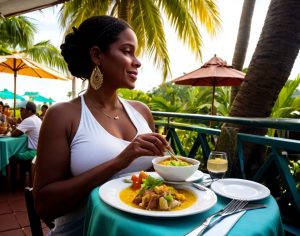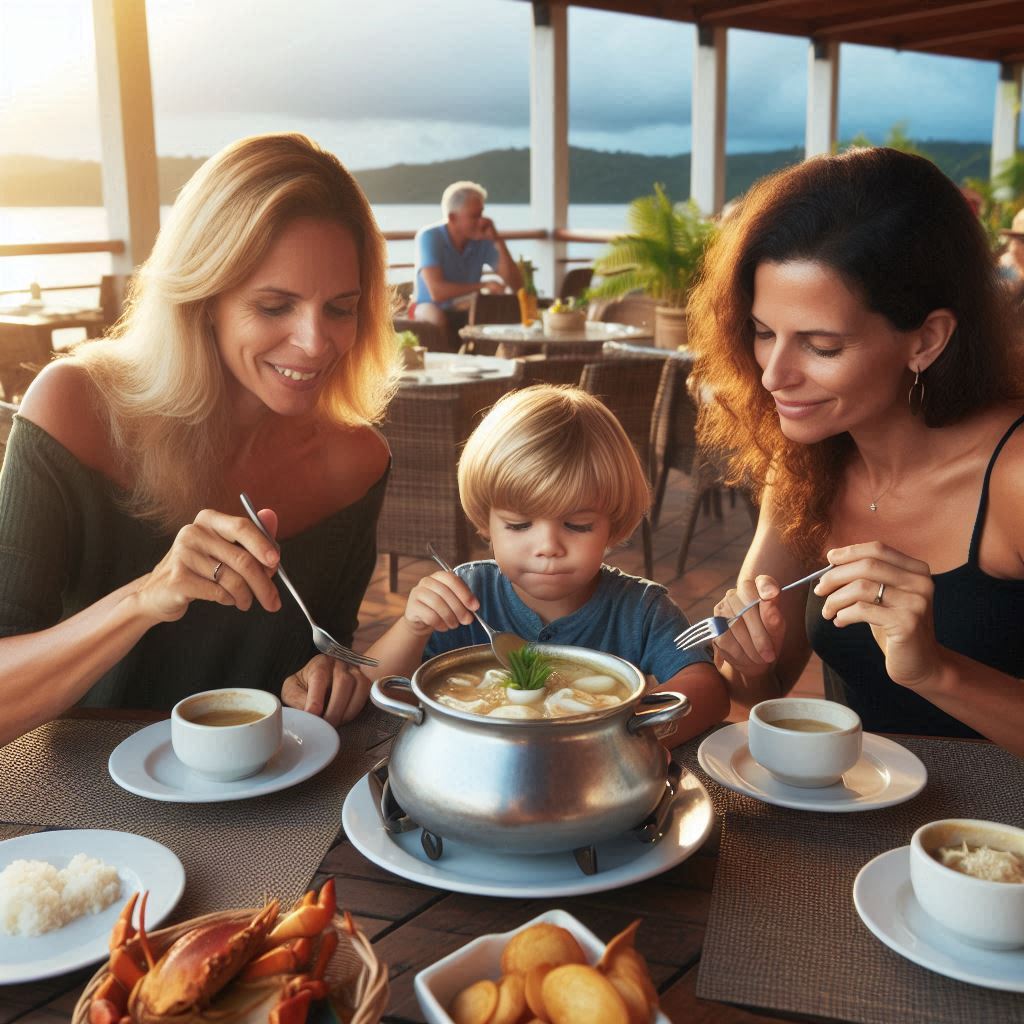The Dominican Republic conjures images of pristine beaches, turquoise waters, and luxurious resorts. But for those seeking a deeper dive into the island’s vibrant culture, a steaming bowl of Sancocho is the passport to a truly unforgettable experience. This hearty stew, the cornerstone of Dominican cuisine, transcends a mere meal; it’s a symphony of flavors, a testament to tradition, and a window into the Dominican soul.
Sancocho boasts a rich history, its roots tracing back to the Taino people, the indigenous inhabitants of the Caribbean. The Spanish conquistadors later incorporated European ingredients like beef and pork, solidifying the dish’s identity as a cultural melting pot. There’s no single, definitive Sancocho recipe. Variations abound from region to region, each reflecting the local bounty and culinary preferences. Yet, the core principle remains constant: a robust broth brimming with succulent meats, vibrant root vegetables, and fragrant herbs.
My exploration of Sancocho began in the heart of the Dominican Republic’s capital, Santo Domingo. A UNESCO World Heritage Site, Santo Domingo boasts a rich colonial past and a contemporary energy that pulsates through its vibrant streets. My quest for the perfect Sancocho led me to Dona Estela, a beloved restaurant tucked away in the historic Gazcue neighborhood. The unassuming facade belied the culinary magic within.
Dona Estela’s ambiance is pure Dominican charm. Sunlight streamed through open windows, illuminating whitewashed walls adorned with colorful paintings. The air hummed with the infectious rhythm of bachata music, and the aroma of simmering goodness filled the air – an olfactory promise of the Sancocho to come.

Seated at a table draped in a crisp white tablecloth, I awaited my introduction to this Dominican treasure. When it arrived, the presentation was as impressive as the fragrance. A clay pot, its rustic exterior hinting at the slow-cooking magic within, held a vibrant crimson broth. Each spoonful revealed a symphony of textures and flavors. Tender chunks of beef, chicken, and Dominican longaniza (sausage) mingled with melt-in-your-mouth yuca (cassava), plantains, green bananas, and red peppers. The rich broth, infused with the smokiness of sofrito (a base of sauteed onions, garlic, peppers, and herbs), delivered a depth of flavor that danced on the palate. A squeeze of fresh lime added a touch of brightness, while a sprinkling of finely chopped red onion provided a welcome textural contrast.
Sancocho is more than just a dish; it’s a cultural tapestry woven with history, tradition, and community. The simmering pot becomes a microcosm of Dominican life, each ingredient representing a thread in the rich fabric of the nation. The slow cooking process, often a family affair, embodies the importance of patience, togetherness, and the creation of something greater than the sum of its parts.
The Dominican Republic is a country brimming with warmth and hospitality, and Sancocho is a tangible expression of these values. Sharing a pot of Sancocho fosters connection and community. It’s a dish traditionally served at family gatherings, celebrations, and even wakes, a testament to its ability to bring people together in moments of joy and solace.
My exploration of Sancocho extended beyond the bustling capital. Venturing deeper into the lush Dominican countryside, I discovered regional variations that showcased the island’s diverse agricultural bounty. In the verdant Cibao Valley, known as the Dominican Republic’s breadbasket, my Sancocho featured a generous helping of locally-grown auyama (pumpkin), lending a touch of sweetness to the savory broth.
On the north coast, in the vibrant beach town of Puerto Plata, my Sancocho took on a distinctly coastal influence. Freshly caught seafood, like shrimp and conch, joined the traditional medley of meats, adding a delightful briny note to the dish. The use of coconut milk in the broth imparted a subtle sweetness and creaminess, a reflection of the region’s proximity to the Caribbean Sea.
Sancocho, with its bold flavors and rich textures, demands a beverage pairing that complements its complexity. While a cold Dominican Presidente beer is a classic and refreshing accompaniment, consider venturing beyond the expected. For a truly Dominican experience, try a glass of Dominican mamajuana, a potent local rum infused with herbs and spices. The earthy notes of mamajuana beautifully echo the smokiness of the sofrito in the Sancocho, creating a harmonious symphony on the palate.
For the wine enthusiast, a medium-bodied red wine, like a Spanish Rioja or a Chilean Carmenere, can stand up to the robust flavors of the stew. The fruity notes of the wine will help cut through the richness of the broth, while the tannins will provide a touch of structure that complements the various textures of the dish.
Sancocho’s future is as bright as the Dominican Republic itself. Young chefs are taking inspiration from this classic dish, adding their own creative twists while staying true to its essence. Look for upscale restaurants in Santo Domingo and beyond experimenting with gourmet ingredients like Wagyu beef or truffle oil, elevating the Sancocho experience for a discerning palate.
However, the heart of Sancocho lies in its ability to connect people across generations and social divides. In the humble kitchens of Dominican households, the tradition of slow-cooking Sancocho will continue to be passed down, ensuring that this flavorful legacy thrives for years to come.
A true appreciation for Sancocho goes beyond the deliciousness in the bowl. It’s an invitation to immerse yourself in the vibrant culture of the Dominican Republic. Take a cooking class and learn the secrets of crafting the perfect Sancocho from a local expert. Visit bustling farmers markets and witness the incredible diversity of ingredients that go into this national treasure. Engage with the warm hospitality of the Dominican people, and let them share stories about the significance of Sancocho in their lives.
The Dominican Republic offers more than just picture-perfect beaches. It’s a land where history and culture simmer together, just like the perfect pot of Sancocho. So, on your next adventure to this captivating island nation, ditch the poolside piña colada and embark on a culinary quest for the soul of the Dominican Republic. One spoonful of Sancocho at a time, you’ll discover a world of warmth, flavor, and cultural richness that will stay with you long after you leave.
Photo credit: René Cortin – Flickr – Wikimedia Commons


